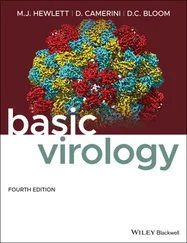Jane Flint - Principles of Virology
Здесь есть возможность читать онлайн «Jane Flint - Principles of Virology» — ознакомительный отрывок электронной книги совершенно бесплатно, а после прочтения отрывка купить полную версию. В некоторых случаях можно слушать аудио, скачать через торрент в формате fb2 и присутствует краткое содержание. Жанр: unrecognised, на английском языке. Описание произведения, (предисловие) а так же отзывы посетителей доступны на портале библиотеки ЛибКат.
- Название:Principles of Virology
- Автор:
- Жанр:
- Год:неизвестен
- ISBN:нет данных
- Рейтинг книги:3 / 5. Голосов: 1
-
Избранное:Добавить в избранное
- Отзывы:
-
Ваша оценка:
- 60
- 1
- 2
- 3
- 4
- 5
Principles of Virology: краткое содержание, описание и аннотация
Предлагаем к чтению аннотацию, описание, краткое содержание или предисловие (зависит от того, что написал сам автор книги «Principles of Virology»). Если вы не нашли необходимую информацию о книге — напишите в комментариях, мы постараемся отыскать её.
Volume I: Molecular Biology
Volume II: Pathogenesis and Control
Principles of Virology, Fifth Edition
Principles of Virology — читать онлайн ознакомительный отрывок
Ниже представлен текст книги, разбитый по страницам. Система сохранения места последней прочитанной страницы, позволяет с удобством читать онлайн бесплатно книгу «Principles of Virology», без необходимости каждый раз заново искать на чём Вы остановились. Поставьте закладку, и сможете в любой момент перейти на страницу, на которой закончили чтение.
Интервал:
Закладка:
Clathrin heavy chain, which mediates formation of endosomes ( Chapter 5), is also selectively incorporated into the particles of many retroviruses. In the case of human immunodeficiency virus type 1, clathrin is recruited by a specific interaction with the integrase (IN) domain of the Gag-Pol polyprotein. Substitutions in the IN region that impair association with clathrin reduce production of virus particles, and are thought to lead to premature processing of the polyproteins from which particles assemble ( Chapter 13).
Cellular components present in virus particles may serve to facilitate virus reproduction, a property exemplified by the cellular tRNA primers for retroviral reverse transcription. However, incorporation of cellular components can also provide antiviral defense. As discussed in Volume II, Chapters 3and 6, packaging of a cellular enzyme that converts cytosine to uracil (APOBEC3) into human immunodeficiency virus type 1 particles at the end of one infectious cycle leads to degradation and hypermutation of viral DNA synthesized early in the next cycle of infection.
Mechanical Properties of Virus Particles
Investigation of Mechanical Properties of Virus Particles
As illustrated in the preceding sections, studies of purified virus particles by methods such as X-ray crystallography and cryo-EM can yield high-resolution descriptions of the interactions among particle components responsible for the assembly and sturdiness of these nanomachines. Such studies are typically performed under extreme conditions, for example, very low temperature, and the structures described are based on the averaging of very large numbers of particles. Consequently, these approaches provide no information about the dynamic or mechanical properties that underlie the functions of virus particles. Such information can be collected by various biophysical methods, including small-angle X-ray scattering and calorimetry. Atomic force microscopy, which permits both imaging of virus particles and measurement of mechanical properties, has been especially useful.
In this method, a very sharp tip attached to a cantilever scans the surface of a sample immobilized on a solid support ( Fig. 4.30A). Deflections of the cantilever to or from the surface during scanning are detected by a laser beam via a position-sensitive detector. In this way, the topography of the surface of a sample such as a virus particle can be imaged, albeit at relatively low resolution ( Fig. 4.30B). To assess mechanical properties, the tip is applied (nanoindentation) to a specific point on the surface, such as an axis of icosahedral symmetry, to deform the particle. Measurement of the force applied as a function of distance (degree of indentation) allows measurement of such parameters as elasticity and the force required to break the particle at that point. This approach has led to fascinating insights into how virus particles meet the seemingly paradoxical requirements for high stability to protect viral genomes and efficient disassembly during entry into a host cell.

Figure 4.30 Atomic force microscopy and its application to human adenovirus particles. (A)A schematic illustration of nanoindentation of virus particles. Virus particles are attached to a solid surface, such as a glass coverslip or mica, and the tip of an atomic force microscope (chosen to be smaller than the radius of the particles of interest) brought into contact. The tip is attached to a cantilever that moves to or from the surface of the particle as it is scanned. Deflections of a laser beam focused on the tip during scanning are recorded via a photodiode, allowing construction of an image of the particle surface. When the force applied via the tip is increased, the degree of deformation of the particle is measured as a function of force, as illustrated in the center. As the force increases, the virus particle eventually breaks, leading to a sudden drop in resistance (bottom). This force is often called the breaking force. Courtesy of G. Nemerow, The Scripps Research Institute. (B)Shown in the right two panels are atomic force microscopy images of a particle of human adenovirus type 5 with short fibers derived from type 35 before and after application of sufficient force to induce mechanical failure. The degree of resolution is low, but sufficient to determine the orientation of these icosahedral particles on the surface. To characterize mechanical failure in more detail, the responses of individual particles were scored on the basis of whether an edge, a facet, or a vertex was probed, revealing three distinct patterns (left three panels). This approach established that the vertices are the weakest points, exhibiting the lowest spring constant and breaking force. Adapted from Snijder J et al. 2013. J Virol 87:2756–2766.
Stabilization and Destabilization of Virus Particles
In all but the simplest T = 1 icosahedral capsids, there is some degree of mismatch between the pentons at the 12 vertices and the hexons that surround them. The frequent reinforcement of these associations at the vertices by especially extensive interactions among structural proteins, as in polioviruses ( Fig. 4.13C), or by specialized “cement” proteins, as in human adenoviruses ( Fig. 4.16B), is not therefore surprising. Nevertheless, the vertices of icosahedral capsids that have been examined by nanoindentation are the points most susceptible to breakage ( Fig. 4.30B). Indeed, human adenovirus pentons are the first components to dissociate under mild pressure in vitro as well as during cell entry. Furthermore, binding of integrin, the coreceptor for entry of these viruses ( Chapter 5), to pentons further weakens the capsid.
Among the minor capsid proteins of herpes simplex virus type 1 are two that bind both pentons and neighboring hexons. As might be anticipated, capsids that lack either of these proteins exhibit decreased stiffness. In some cases, the presence of the viral genome substantially increases capsid stability. For example, comparison of the mechanical properties of full and empty capsids of the (+) strand insect virus triatoma virus by nanoindentation identified pH-dependent changes: at neutral pH, as in infected cells, mature virus particles were some threefold stiffer than those without genomes and more resistant to deformation. However, these properties were reversed at a more alkaline pH, like that of the hindgut of the insect host, where the virus encounters host cells. Binding of the single-stranded DNA genome of the parvovirus minute virus of mice also increases the stiffness of virus particles, and concomitantly their resistance to thermal inactivation.
A variety of viruses are assembled as immature forms that are converted to infectious particles upon proteolytic processing of structural protein precursors. It is now clearly established that such proteolytic cleavages are accompanied by mechanical alterations that increase internal pressure to facilitate DNA ejection (e.g., herpesviruses and many bacteriophages) or decrease the mechanical strength of virus particles to facilitate disassembly (e.g., human adenoviruses) or entry into the host cell (e.g., human immunodeficiency virus). Such mechanical transformations are considered in Chapters 5and 13.
Perspectives
Virus particles are among the most elegant and visually pleasing structures found in nature, as illustrated by the images presented in this chapter. Now that many structures of particles or their components have been examined, we can appreciate the surprisingly diverse architectures they exhibit. Nevertheless, the simple principles of their construction proposed more than 60 years ago remain pertinent: with few exceptions, the capsid shells that encase and protect nucleic acid genomes are built from a small number of proteins arranged with helical or icosahedral symmetry. This feature is characteristic of even some of the largest viruses yet described, indicating that not only genetic economy but also optimized and regular interactions among structural units dictate virus architecture.
Читать дальшеИнтервал:
Закладка:
Похожие книги на «Principles of Virology»
Представляем Вашему вниманию похожие книги на «Principles of Virology» списком для выбора. Мы отобрали схожую по названию и смыслу литературу в надежде предоставить читателям больше вариантов отыскать новые, интересные, ещё непрочитанные произведения.
Обсуждение, отзывы о книге «Principles of Virology» и просто собственные мнения читателей. Оставьте ваши комментарии, напишите, что Вы думаете о произведении, его смысле или главных героях. Укажите что конкретно понравилось, а что нет, и почему Вы так считаете.











